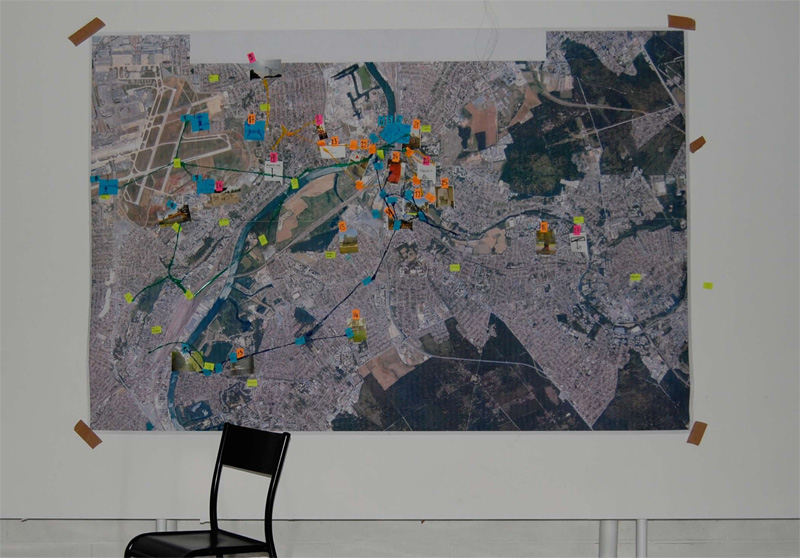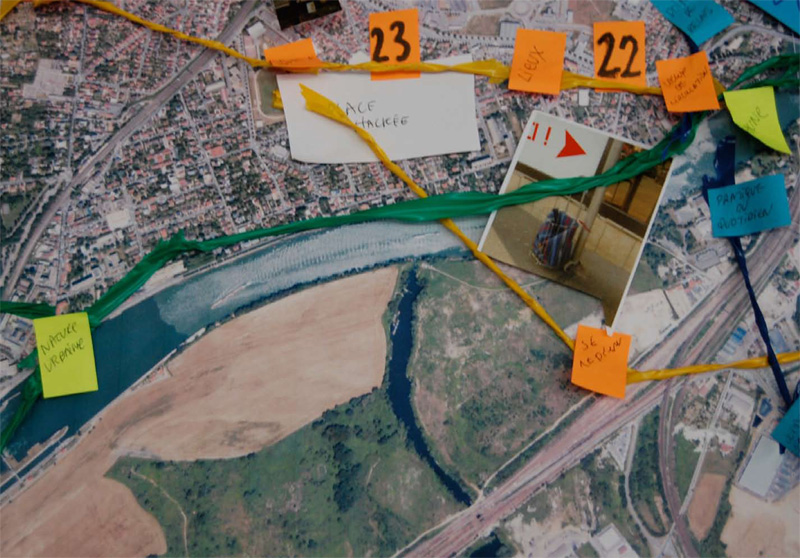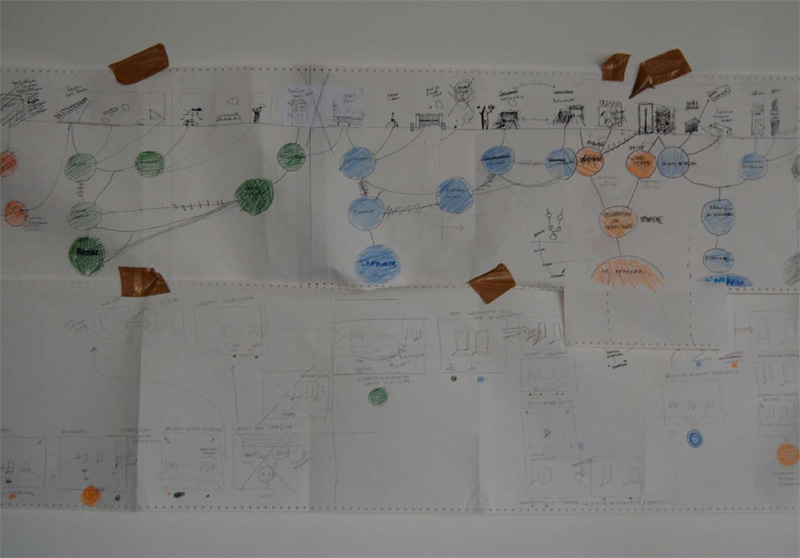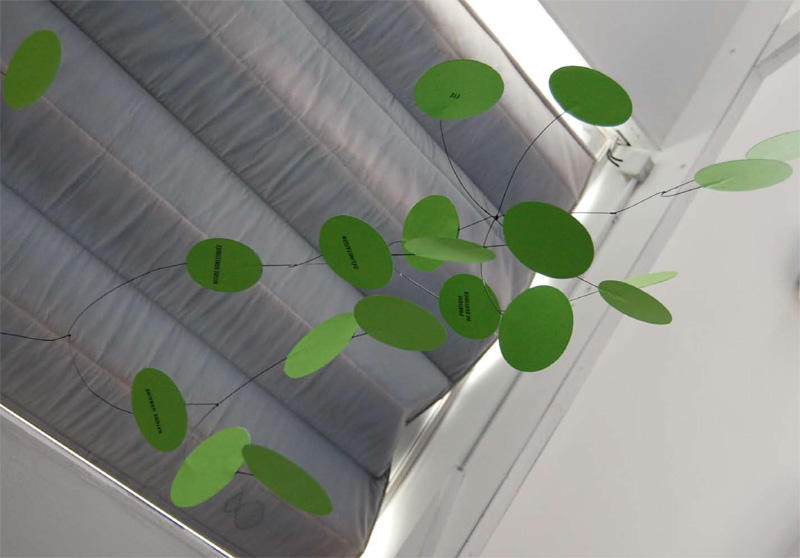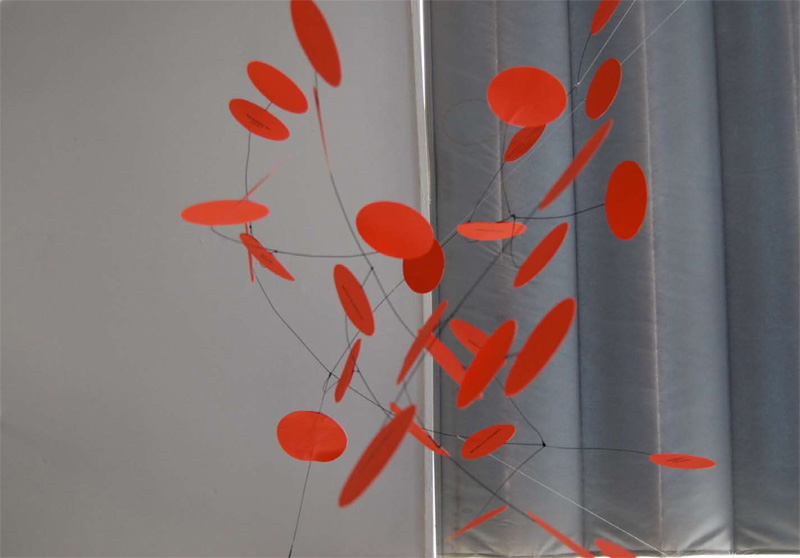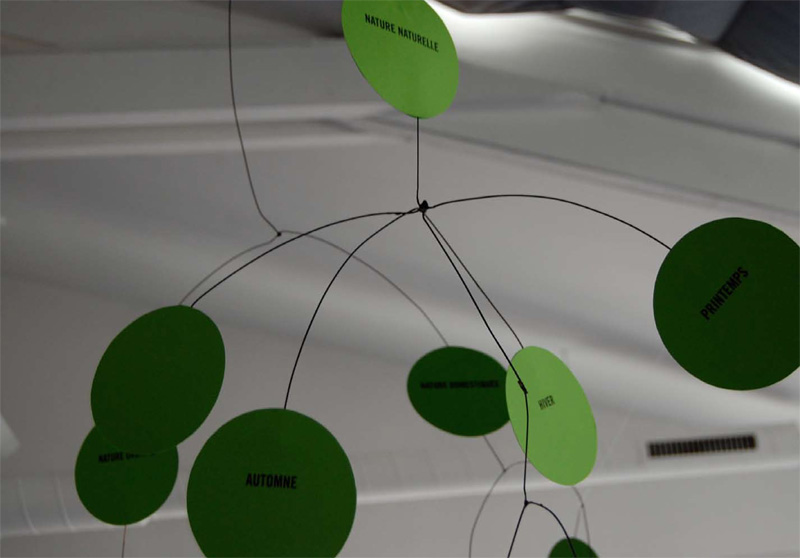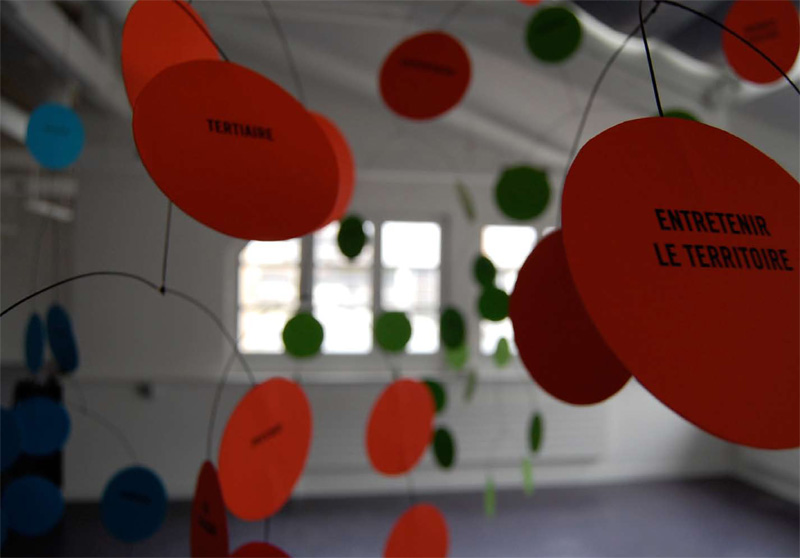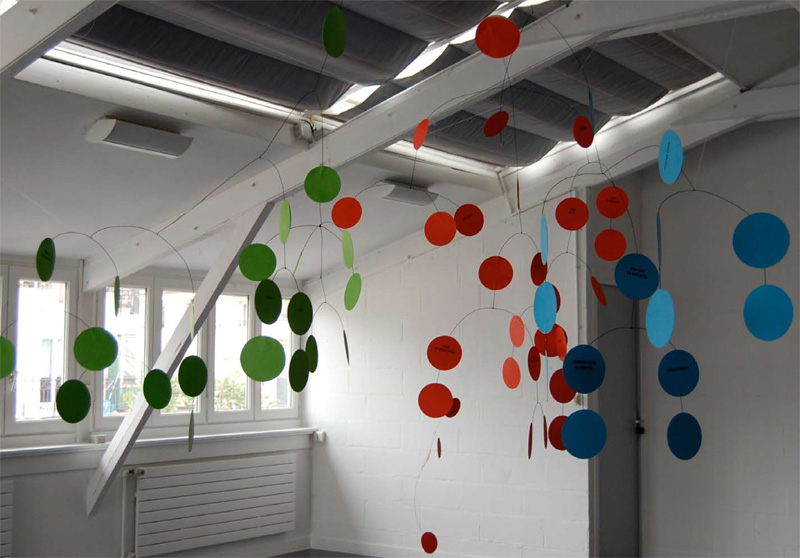Le grand Paris
International Request for Quotes - Workshop
In collaboration with Laura Pandelle, Isabelle Daëron, Raphaël Daufresne, Laurence Dupuis, Xiao Yu Lou, Pierre Cloarec, Célia Rossi, Solène Borrat.
Atelier Jean Nouvel 2008.
How to picture a "Greater Paris"?
The diversity of the space and its use is such that it is hard to tackle common ground between the inhabitants and what might the collective figures gather in a shared metropolitan identity. In an attempt to answer, the Jean Nouvel agency considers a new "slice" of suburban fabric: a straight line from Orly airport to the forest of Senart, a route that crosses all types of urbanized spaces, housing estates, former villages, large developments, industrial areas, road and rail infrastructure, plains, slopes and a river, the Seine.
After an assessment of places and customs, all possible techniques from drafting and watercolor to photography and video, from geographical mapping to satellite view, we devise a particularly novel representation trial, through all these materials together: The “Grand-Paris” is a purposefully represented balance. We study three scopes:
Benchmarks
The landscape of the Grand Paris has benchmarks approved by a peri-urban area - signs, signals, tracks, etc.. - Implicit and benchmarks, landscape elements adopted as indicators tracked by the inhabitants. These reflect the proximity between the morphology of the territory and the daily life of its people.These indices are complemented by ad hoc types of places that distinguish the individual's relationship to space in Greater Paris: communication channels and intersections are traffic conditions and the extent of the elasticity of the territory .
Nature
Infrastructures and traffic though them are fauna and flora in a special nature suburban context.This "urban nature", perceived across the landscape, balances out with “natural nature” adopted by inhabitants and that we will call "domesticated nature". It deals rather with the relation of the individual to nature.
Ownership / Piracy
Marking a territory with an appropriate identity or diverting it to assign it another function is the final research angle of this analysis.This diversion point, which occurs in a "social and conventional" manner through events such as flea markets, block parties, etc., is also found at a smaller scale, in implicit social interactions among residents: dropping bulky everyday items at the base of a particular lamppost. These places,becoming relay points between the inhabitant and the collective space management, constitute a special appropriation of the territory.
